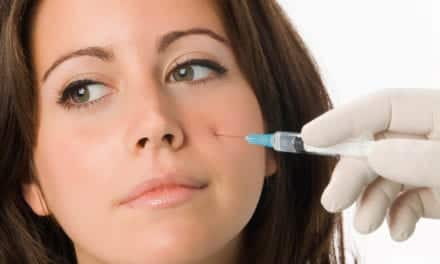 |
Several new wrinkle relaxers are coming down the pike: Mentor has announced Purtox, Solstice Neurosciences will have Myobloc, and Merz will offer Xeomin. However, it could be years before they enter the US market.
Medicis’ Reloxin—also known as Dysport in the rest of the world—is expected to be approved by the FDA this spring. It is positioned to give Allergan’s Botox a run for its money.
The clinical trial results for Reloxin are, at present, a closely guarded secret until the FDA either grants or denies approval. As Medicis seeks approval of Reloxin for aesthetic uses only, the firm will not have to go through the kind of rigorous FDA approval process reserved for a medical procedure.
Reloxin will be used identically to Botox, although there may be minor modifications in its packaging as well as a dilution formulation. As those modifications are minor, the “ramp up” will not be too steep for physicians who want to learn how to inject Reloxin.
 |
Leslie Baumann, MD, professor and director of cosmetic dermatology at the Miller School of Medicine at the University of Miami, led the clinical trials for Reloxin.
“Many patients and physicians in Brazil prefer Reloxin over Botox because they say it takes effect sooner,” Baumann says. These physicians noted a maximum response in 2 days for Reloxin versus 5 to 7 days for Botox.
“Two to 3 days matter when it’s something important,” Baumann adds. “If you and a friend go to a doctor on a Wednesday to prepare you for a party that weekend, and the doctor uses Reloxin on your friend and Botox on you, your friend will look good for the party and you won’t because your Botox hasn’t kicked in yet.”
Reportedly, some controversy lies in the duration of effectiveness for both Reloxin and Botox. Baumann claims physicians who have used Dysport indicate that the drug may last longer than Botox, at 5 to 6 months versus 3 to 4 months. However, those or any other numbers are not known yet, proven or stated officially by anyone.
 |
When I probed Baumann about using Reloxin versus Botox, she said, “If Reloxin is at least as good as Botox and it kicks in faster, that gives us another option. And that’s good for us—the physicians as well as our patients.”
Some physicians are less enthusiastic. S. Randolph Waldman, MD, a facial plastic surgeon in Louisville, Ky, is a Platinum Member of Allergan’s high-volume Botox Club.
He is not so quick to turn to a competing product because, as he says, he likes the confidence gained by using a product with a long safety record and which is good for his patients.
Even though the presumed price point for Reloxin is supposed to be less than that of Botox, Waldman doesn’t believe most physicians are anxious to jump on board with Reloxin just for price. There will need to be more compelling reasons for Reloxin to become a major player, he adds.
“Keeping Reloxin in the hands of the core specialties will help build its safety record and ensure its effectiveness by limiting it to experienced aesthetic physicians,” he says.
In business, there are only so many ways the new contender Reloxin can attempt to overtake the market leader Botox. Medicis can do the following:
|
See also “Fillers and Injectables” by Wendy Lewis in the June 2008 issue of PSP. |
 |
- Cut prices much lower to become the cheaper alternative;
- Promote the advantages of Reloxin and charge more;
- Advertise directly to the consumer so the consumer pushes physicians to stock and use Reloxin;
- Advertise directly to the physicians on the medical and opportunistic advantages of switching from Botox;
- Woo the media to hype the heck out of Reloxin; and
- Spend a lot of money doing all of the above and hope for the best.
That begs the question: Is this going to lead to a price war over wrinkle relaxers or price fixing?
Allergan’s response to Reloxin is based on Botox’s safety record. The firm has stated that one cannot assume any other product has the same precise and predictable results with the same safety profile as Botox. Allergan is correct. But will that be enough to keep Reloxin from taking a huge bite out of the Botox monopoly?
Catherine Maley, MBA, consults with physicians in private practice as well as industry vendors on how to grow an aesthetic practice using PR, advertising, and creative marketing strategies. She can be reached at (877) 339-8833.



